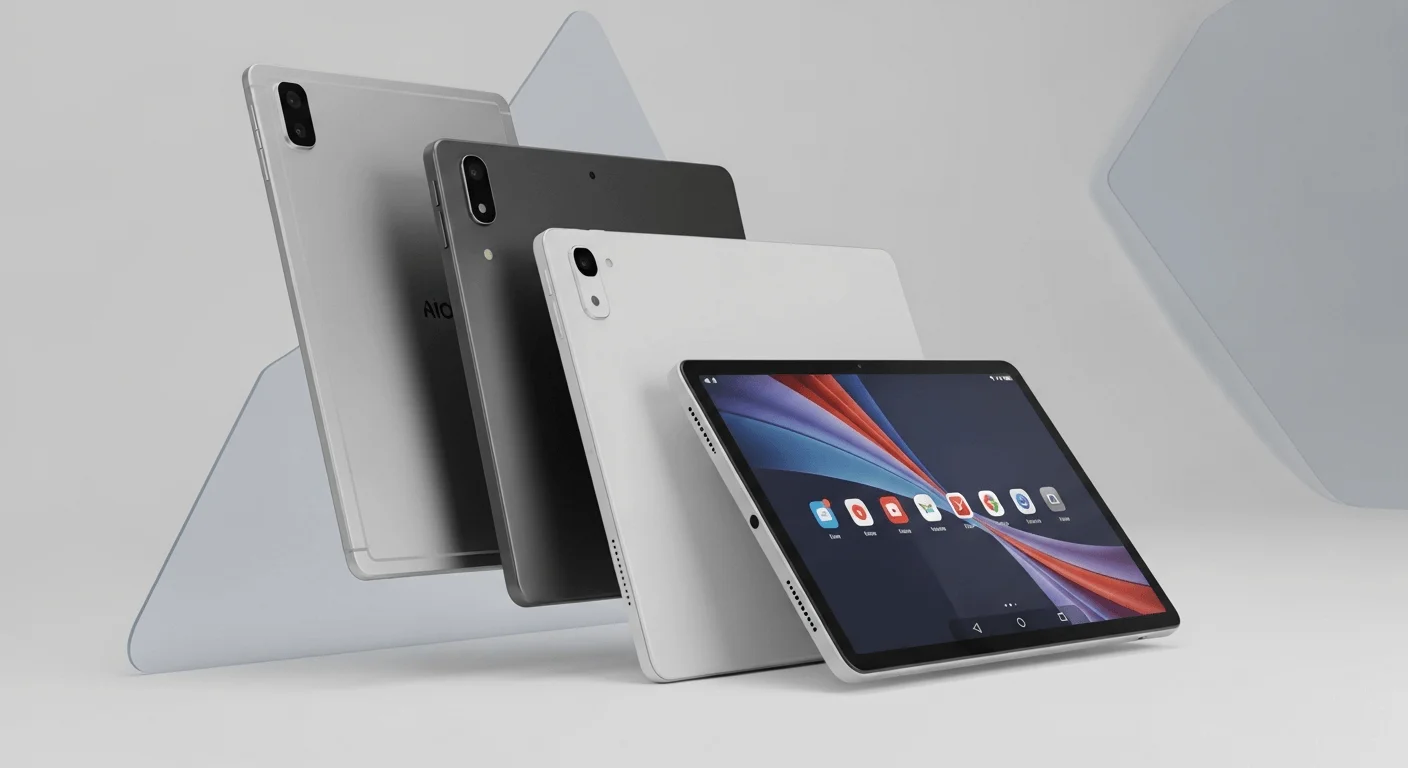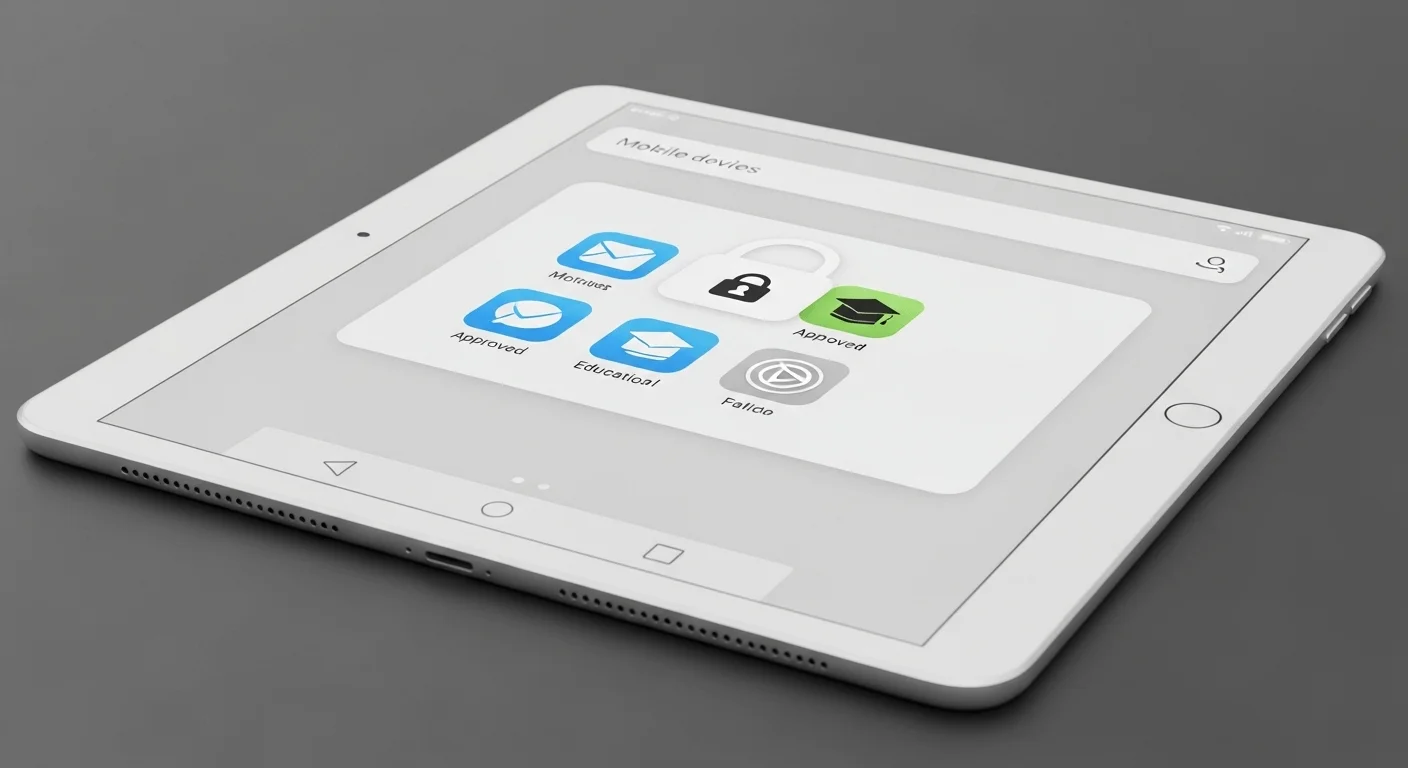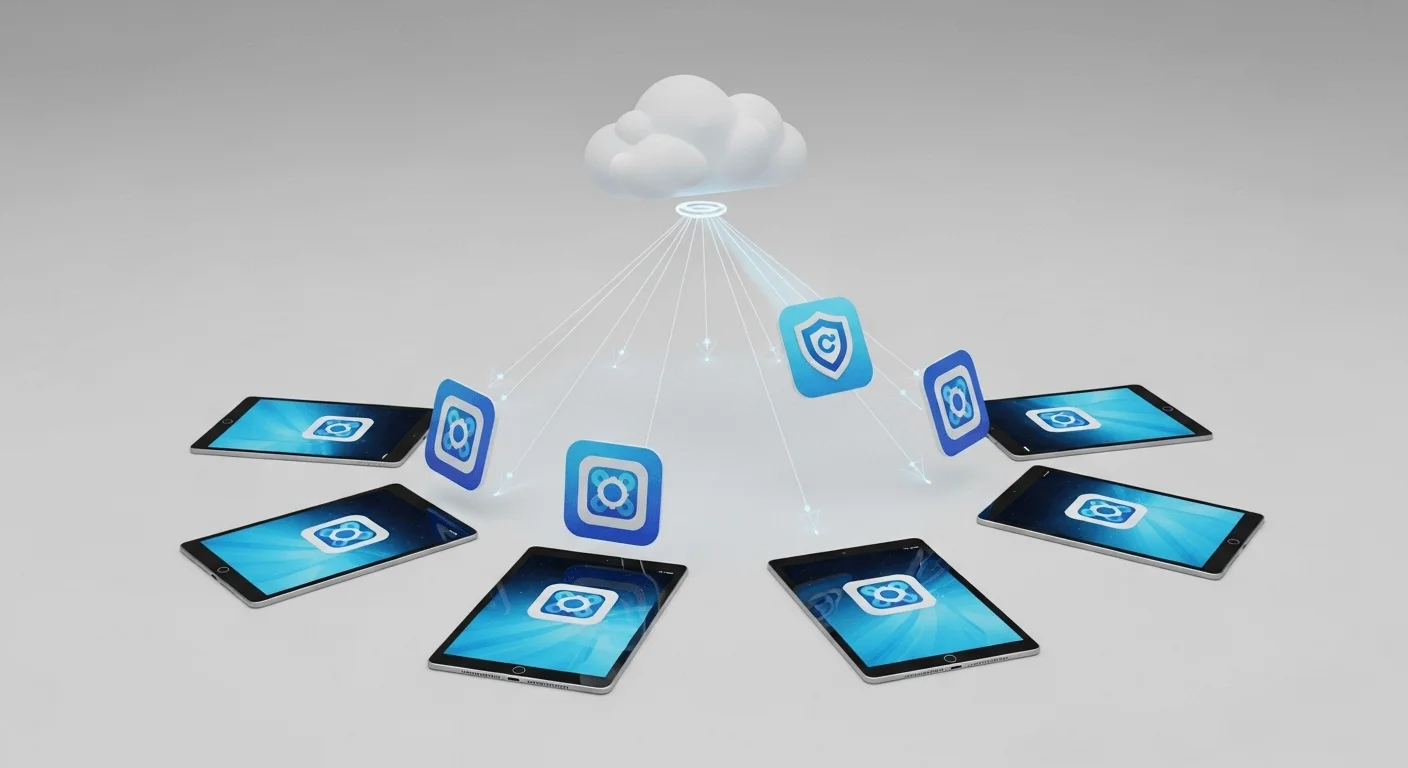The Android Advantage: Why Android Enterprise is the Smart Choice for Schools
Deploying hundreds, or even thousands, of student tablets before the school year starts is a monumental task for any IT team. Traditional methods of manual setup are inefficient, insecure, and simply don't scale for modern educational needs. The global delivery of devices to K-12 schools surged from 30 million in 2019 to 51 million by the end of 2020, and the challenge has only grown.
This guide cuts through the generic advice and provides a practical, Android-first playbook for securing and managing your school's tablet fleet. We'll show you how to move from chaotic manual processes to a streamlined, automated system that enhances learning instead of creating IT overhead. We'll cover everything from large-scale deployment with Zero-Touch Enrollment to creating a focused digital classroom and ensuring CIPA compliance, all through the lens of an Android Enterprise specialist.
Beyond Cost: Flexibility in Hardware and Budget
Choosing a device ecosystem for your district is a long-term commitment. While other platforms offer a limited, one-size-fits-all hardware selection, the Android ecosystem provides unparalleled flexibility. This allows you to tailor your device procurement directly to educational needs and budget realities, maximizing the impact of every dollar spent. The total cost of ownership extends beyond the initial purchase, and Android's versatility offers significant advantages.

- Budget-Friendly Options: Source affordable yet capable tablets for general classroom use, ensuring equitable access for all students without straining district finances.
- Ruggedized Devices: Deploy durable, drop-resistant tablets with reinforced casings for younger students or special education programs, reducing replacement costs from accidental damage.
- High-Performance Models: Equip high school students in STEM or media arts programs with powerful devices that can handle demanding applications for graphic design, video editing, or coding.
- Purpose-Built Form Factors: Select from a range of screen sizes and form factors, including tablets with detachable keyboards, to match the specific curriculum and learning environment of different grade levels.
This hardware diversity can seem complex to manage, but it doesn't have to be. As an Android Enterprise specialist, Nomid MDM provides deep expertise across the entire ecosystem. Our platform, including robust Samsung Knox integration, ensures your IT team can manage any device choice effectively from a single console, freeing you from vendor lock-in and empowering you to choose the best hardware for your students.
Built for Learning: Seamless Integration with Google for Education
The vast majority of schools already use Google for Education tools like Classroom, Drive, Docs, and Sheets. Android is the native operating system for this suite, creating a cohesive and frictionless learning experience. When managed properly through Android Enterprise, this integration becomes a powerful tool for classroom efficiency. You can move beyond simply providing devices to creating a true digital learning environment.
With a proper MDM, you can pre-configure managed Google accounts, automatically push essential apps from the Google suite, and ensure every student has access to their documents and assignments the moment they log in. This native alignment eliminates compatibility issues and simplifies the user experience for both students and teachers.

As an official Android Enterprise Partner, Nomid provides the most direct and reliable integration possible. We ensure that policies, configurations, and managed Google Play apps are deployed flawlessly. This means less time troubleshooting login issues and more time for teachers to focus on instruction, confident that the technology will work as expected.
Master Deployment: Go from Box to Student-Ready in Minutes
The back-to-school deployment rush is a major pain point for K-12 IT departments. Manually configuring thousands of devices is not a viable strategy. It's prone to error, insecure, and consumes hundreds of hours of valuable IT time. This is where automated, large-scale deployment becomes essential.
The Zero-Touch Enrollment Blueprint
Android Zero-Touch Enrollment is a game-changer for school districts. It transforms device deployment from a hands-on, manual task to a fully automated, out-of-the-box process. With 88% of U.S. public schools now offering take-home devices to all students, a scalable deployment method is mission-critical. The process is simple, secure, and requires no direct intervention from your IT staff on the physical device.

- Purchase from a Partner: Procure your Android devices from a certified Zero-Touch reseller. The reseller automatically registers the devices' serial numbers to your school's Zero-Touch portal.
- Pre-configure in the MDM: In your Nomid MDM console, you create an enrollment configuration. This profile contains all your settings: Wi-Fi credentials, security policies, required apps, and lockdown configurations.
- Assign the Configuration: In the Zero-Touch portal, you assign your pre-built Nomid configuration to the newly purchased devices. This entire step takes only a few clicks.
- Unbox and Power On: The device is shipped directly to the school or student. Upon unboxing, the user powers it on and connects it to Wi-Fi.
- Automatic Enrollment: The device communicates with Google's servers, recognizes its serial number is part of your Zero-Touch account, and automatically downloads the Nomid MDM agent and applies the assigned configuration. The device is fully managed and secured before the user ever reaches the home screen.
Nomid's Zero-Touch Enrollment process is industry-leading in speed and reliability. Our cloud-native infrastructure ensures that thousands of devices can enroll simultaneously without performance degradation-a critical factor for getting an entire district ready for the first day of school.
Click here to learn more about the biggest benefits of using an MDM
Configuring Deployment Policies for Shared vs. 1:1 Devices
Not all student devices serve the same purpose. A 1:1 take-home tablet requires a different security posture than a set of shared devices in a classroom cart. A robust MDM allows you to create and assign distinct policy groups for these different deployment models, all from a single console.

| Policy Area | 1:1 Take-Home Devices | Shared Classroom Devices |
|---|---|---|
| User Accounts | Dedicated managed Google account assigned to a specific student. | Ephemeral user mode (data wiped on logout) or a generic, locked-down shared account. |
| Security & Recovery | Enable remote lock, wipe, and location services to recover lost or stolen devices. Enforce strong passcodes. | Disable location services for privacy. Focus on in-school security like kiosk mode and Wi-Fi restrictions. |
| App Management | Provide a curated list of approved apps via a Managed Google Play Store. Allow students some flexibility if policy permits. | Strictly enforce a multi-app Kiosk Mode, locking the device to only essential apps for that classroom's curriculum. |
| Content Filtering | Configure DNS-based filtering or a mandatory VPN to ensure CIPA compliance both on and off campus. | Rely primarily on the school's network-level filtering, as devices do not leave the premises. |
Nomid's intuitive UI makes this easy. You can create policy groups like "Middle School 1:1," "Elementary Carts," or "Library Kiosks" and apply them during Zero-Touch enrollment or change them on the fly as devices move between roles.
Build a Secure and Focused Digital Classroom
Once deployed, the primary goal of student devices is to enhance learning. This requires creating a digital environment that is free from distractions and safe for students. Android Enterprise provides granular controls to achieve this, moving beyond simple web filtering to true device lockdown and policy enforcement.
Lockdown Mode: Creating a Distraction-Free Learning Zone
Kiosk Mode is one of the most powerful features for education. It allows you to lock a device to a single application (e.g., for standardized testing) or a pre-approved set of applications, effectively turning a general-purpose tablet into a dedicated learning tool. This prevents students from accessing games, social media, unrestricted web browsers, or device settings.
Check our comprehensive article on what is Kiosk Mode

"MDM solutions for schools allow institutions to control device usage, filter harmful content, push learning material, and even lock screens all from a central dashboard." - EduCorpus
You can create multiple kiosk profiles tailored to specific educational contexts and switch devices between them as needed. This allows for dynamic classroom management.
| Kiosk Profile Name | Use Case | Allowed Apps |
|---|---|---|
| State Testing Mode | Standardized digital assessments | Single App Mode: Secure Testing Browser |
| Math Class Mode | Daily instruction in 5th-grade math | Calculator, Google Classroom, Math Learning App, Web Browser (with filter) |
| Library Research Mode | Student research in the school library | Library Catalog App, Google Docs, Approved Research Databases, Web Browser |
With Nomid, setting up and deploying these profiles is straightforward. An IT administrator can create these templates and empower a teacher or librarian to switch a classroom set of devices into the appropriate mode for their lesson plan directly from a simplified web portal.
Enforcing Security Policies for CIPA Compliance and Data Privacy
Protecting students is paramount. Your MDM is a critical tool for enforcing policies that secure devices, protect student data, and help your district meet its obligations under the Children's Internet Protection Act (CIPA). Given that 75% of K-12 IT leaders cite device loss as a top issue, remote security features are non-negotiable.

Key security policies for every school district should include:
- Passcode Enforcement: Mandate minimum passcode length and complexity to prevent unauthorized access.
- Hardware Restrictions: Disable features like the camera, microphone, or USB file transfer on a policy basis to prevent misuse and protect privacy.
- Content Filtering: Enforce the use of a secure DNS provider or an always-on VPN to filter inappropriate content, a core tenet of CIPA. This policy ensures filtering works even when devices are on a home network.
- Remote Lock & Wipe: Instantly lock a device that is reported lost or remotely wipe all its data if it is confirmed stolen, protecting sensitive student information from being compromised.
- Network Controls: Restrict devices to connect only to approved school Wi-Fi networks, preventing students from bypassing network filters by connecting to personal hotspots.
Nomid provides a comprehensive suite of these security controls, designed specifically for the educational context. Our platform simplifies the process of configuring, deploying, and reporting on these policies, giving you the tools to protect your students and demonstrate CIPA compliance.
Streamline Day-to-Day Fleet Management
Deployment is just the beginning. A successful 1:1 or shared device program requires efficient, proactive management throughout the school year. An MDM serves as your central command center, providing the visibility and tools needed to manage thousands of devices without overwhelming your IT staff.
The Centralized Command Center: Your Single Source of Truth
Instead of tracking devices in spreadsheets and dealing with issues one by one, a centralized MDM console gives you a real-time, comprehensive view of your entire fleet. This is the core of efficient fleet management, allowing you to move from a reactive to a proactive model.
"The key to a well-managed school technology program is an MDM that allows IT teams to efficiently take control of devices." - Tech & Learning

From this single dashboard, you can see device inventory, check battery levels on an entire classroom cart, see which devices are online, and identify devices that haven't checked in. Remote troubleshooting tools, such as remote view and control (with user consent), allow IT staff to fix problems without needing to physically handle the device, saving time for both staff and students. Nomid's intuitive UI/UX is designed for busy IT admins. We provide a clean, powerful dashboard that gives you immediate visibility and control over your entire Android fleet without a steep learning curve.
Silent App Installs and OS Updates: Keep Learning Uninterrupted
The digital curriculum is always evolving. A teacher might discover a new learning app mid-year, or a critical security patch for the operating system might be released. An MDM allows you to manage these changes seamlessly in the background, without disrupting class time or requiring any action from students or teachers.

This process is crucial for maintaining a secure and functional learning environment.
| Management Task | Manual Method (Without MDM) | Automated Method (With Nomid MDM) |
|---|---|---|
| New App Rollout | Send instructions to teachers/students, who must manually find and install the app. High failure rate. | IT admin adds the app to a policy group. The app installs silently and automatically on all assigned devices. |
| App Updates | Relies on users to approve and install updates, leading to version fragmentation and potential security issues. | Updates are automatically pushed to devices based on IT policy, ensuring consistency. |
| OS Updates | Users are prompted to update, often during class, disrupting lessons. Many defer updates indefinitely. | IT schedules mandatory OS updates to occur overnight or over the weekend, maintaining security without interruption. |
Nomid leverages Managed Google Play to provide robust and reliable application management. You can schedule updates, push new learning tools, and manage OS versions effortlessly across your entire fleet. This ensures every student has a consistent, secure, and up-to-date learning experience.
- Key Takeaway: Android Enterprise, when paired with a specialized MDM, offers a flexible and powerful platform for digital learning.
- Key Takeaway: Zero-Touch Enrollment is non-negotiable for large-scale school deployments, saving hundreds of IT hours.
- Key Takeaway: Effective classroom management relies on granular controls like Kiosk Mode and robust security policies.
- Key Takeaway: A centralized console is the key to proactive, efficient fleet management throughout the school year.
Your Next Step: Audit your current device fleet and identify your top 3 policy requirements. Are you focused on preventing distractions, securing take-home devices, or simplifying shared device management? A clear goal is the first step to a successful implementation.
Nomid MDM isn't just another generic tool; we are your Android Enterprise specialists for education. We partner with school districts to implement these strategies, ensuring your technology investment enhances learning, not your workload. See how our focused expertise can transform your school's device management program.
Share this article
Tags
- #MDM for education
- #student tablet security
- #school device management
- #K-12 MDM solutions
- #Android MDM for schools


